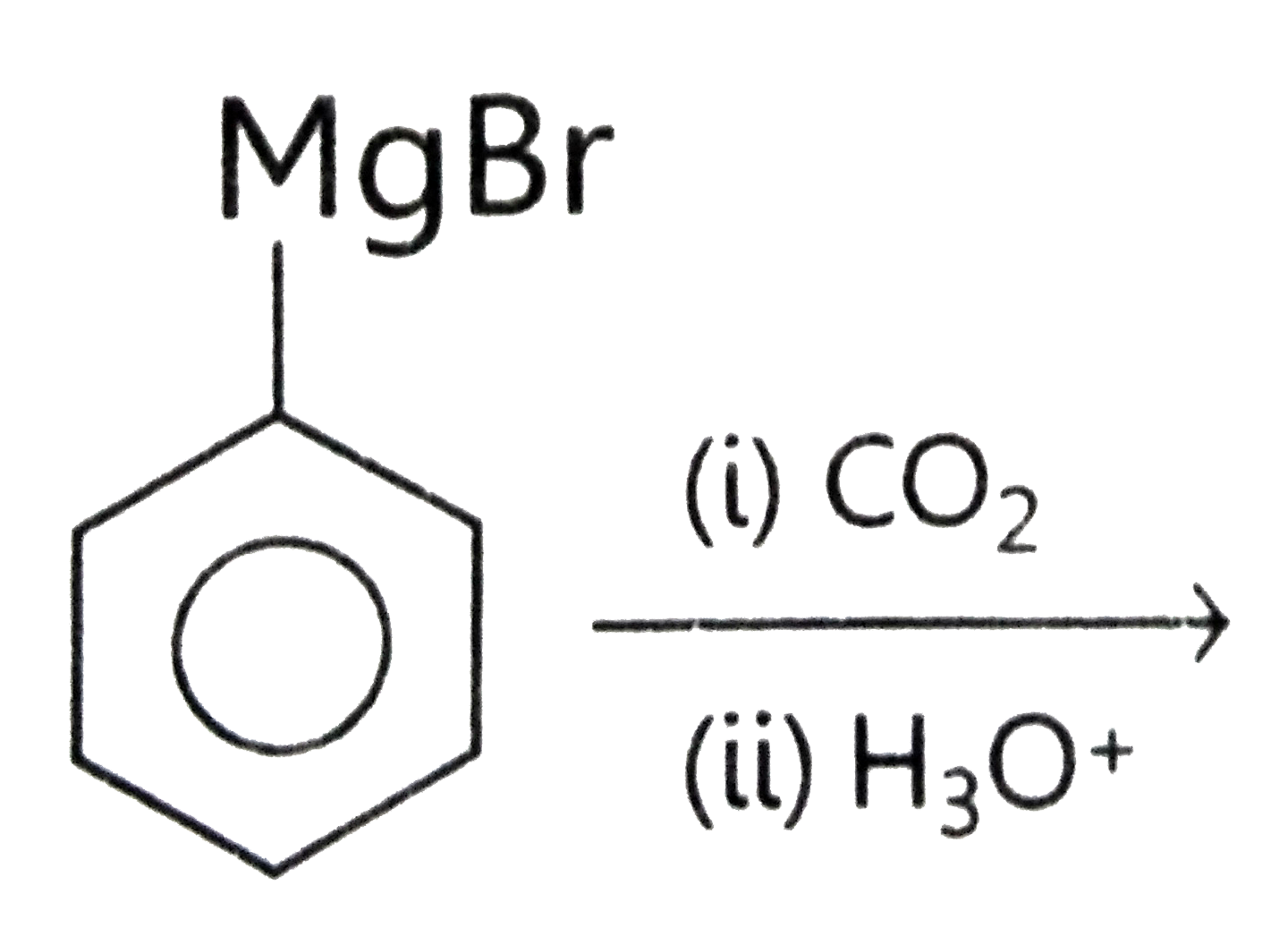Complete Solutions to PAPER 1 OBJECTIVE TYPE of chapter PRACTICE SET 08 of Class 12 book with complete answers and questions
| Class 12 | CHEMISTRY |
| Chapter | PRACTICE SET 08 |
| MHTCET PRACTICE PAPER | PAPER 1 OBJECTIVE TYPE |
| Number Of Questions | 50 |
| Academic Year | 2023-24 |
The freezing point of a 0.05 molal solution of a non-electrolyte in water is `[K_(f)=1.86K//m]`
01:47View SolutionIn the synthesis of ammonia
`N_(2)(g)+3H_(2)hArr2NH_(3)(g)`
If the quantity of `N_(2)` reacted is `700mL`, the quantity of `H_(2)` and `NH_(3)` would be01:16View SolutionWhich of the following reactions canot be a base for electrochemical cell?
06:18View SolutionRate of a reaction increases with the rise of temperature. The reason is
01:35View SolutionWhich statement is not correct about fullerene `C_(60)`?
02:47View SolutionThe percentage of s-character in the hybridised orbitals of B in `BF_(3)` is
02:10View SolutionBleaching powder is obtained by treating chlorine with
02:05View SolutionThe oxide of chromium which will show acidic character is
02:32View SolutionArrange the following free radiacals in order of decreasing stability.
Methyl (I), Vinyl(II), Allyl(III), Benzyl(IV)04:05View SolutionEther is not formed in which of the reactions?
05:11View SolutionAt relatively high pressure, van der Waal's equation reduces to
02:03View SolutionBased on the first law of thermodynamics, which one of the following is correct?
01:41View SolutionThe standard emf for the cell reaction,
`2Cu^(+)(aq)to2Cu(s)+Cu^(2+)(aq)`
is `0.36V` at `298K`. The equilibrium constant of the reaction is02:48View SolutionWhat is the activation energy for a reaction if its rate constant doubles when the temperature is raised from `20^(@)C` to `35^(@)C`? (`R=8.314`Jmol/K)
03:24View SolutionThe most unsymmetrical system is
01:16View SolutionCalcium silicate (slag) formed in the slag formation zone is extraction of iron from haematite ore
I. does not dissolve in molten iron
II. being lighter floats on the moltern iron
III. Is used in cement industry
IV. prevents the re-oxidation of molten iron02:41View SolutionIn `NO_(3)^(-)`ion, the number of bond pairs and lone pairs of electrons on nitrogen atom respectively are
02:07View SolutionElement with maximum atomic number is
01:48View SolutionBenzene does not undergo addition reaction easily because
02:32View SolutionIn the Rosenmund's reaction
`RCOCl underset(H_(2))overset(Pd/BaSO_(4))(to)RCHO,BaSO_(4)` here01:49View SolutionIn which of the following reactions, there is no change in valency?
04:45View SolutionWhich of the following is incorrect?
02:36View SolutionGiven `l//a=0.5 cm^(-1), R= 50 "ohm", N= 1.0.` The equivalent conductance of the electrolytic cell is .
02:11View SolutionOxalic acid is oxidised by a acidified `KMnO_(4)` as follows:
`2MnO_(4)^(-)+16H^(+)+5C_(2)O_(4)^(2-)to2Mn^(2+)+10CO_(2)+8H_(2)O`
The rate of this reaction increases with time because03:03View SolutionThe process of extracting metals by electrolysis of their oxides, hydroxides or chlorides in the fused state is called
02:18View SolutionIn group-16 the element whose hydride is neutral in nature is
00:54View SolutionWhich is incorrect statement for `XeF_(2)`?
05:11View SolutionTransuranic elements begin with
01:19View SolutionFourth member of homologous series of chloroalkane can never be
03:10View SolutionWhen ethanal reacts with `PCl_(5)`, then product formed is
03:07View SolutionOzone is prepasred by passing silent electric discharge through oxygen. In th is reaction,
01:15View SolutionWhich of the followign metal is solution forms a precipitate with `NaOH` which is not soluble in an excess of the base?
02:57View SolutionOf the following complexes which one will show coordination isomerism?
01:29View SolutionDuring dehydration of alcholos to alkenes by heating with conc. `H_(2)SO_(4)`, initial step is
02:27View Solution
In the above reaction, product `P` is02:24View Solutionn-butylamind(I), diethylamine (II) and N,N-dimethylethylamine (III) have the same molar mass. The increasing order of their boiling point is
03:32View SolutionBenzene diazonium chloride on reaction with phenol in weakly basic medium gives
03:17View SolutionWhich of the following is an examples of fibrous protein?
02:33View SolutionNatural rubber is not used in making footwear for polar regions because
01:58View SolutionWhich of the following soaps/detergents is least biodegrdable?
01:39View SolutionWhich has the highest heat of vaporisation?
02:48View SolutionAqueous solution of `CuSO_(4)` is acidic because
02:04View SolutionFor the same metal ion stability constant is more for the ligand
03:00View SolutionAmong the following select the alkane that is expected to have lowest boiling point
03:25View Solution`CH_(3)COOHoverset(NH_(3))(to)overset(Delta)(to)`? The product of the reaction is isomeric with
02:19View SolutionComplete the following reaction
 03:54View Solution
03:54View SolutionA lipid having tetracyclic structure is
02:51View SolutionAmongst cellulose poly (vinyl chloride), nylon and natural rubber, the polymer in which the intermolecular force of attraction is weakest in
04:04View SolutionThe following reaction
`CH_(3)-underset(CH_(3))underset(|)overset(H)overset(|)(C)-underset(X)underset(|)overset(CH_(3))overset(|)(C)-CH_(3)underset(-2O,-KBr)overset(Alc.kOH)(to)`
`CH_(3)-underset(CH_(3))(|)(C)=overset(CH_(3))overset(|)(C)-CH_(3)`
is an example of02:48View SolutionWhich of the following statement is incorrect for physical adsorption?
01:59View Solution
PAPER 1 OBJECTIVE TYPE questions and complete solutions for chapter PRACTICE SET 08 of MHTCET PREVIOUS YEAR PAPERS AND PRACTICE PAPERS of Class 12
